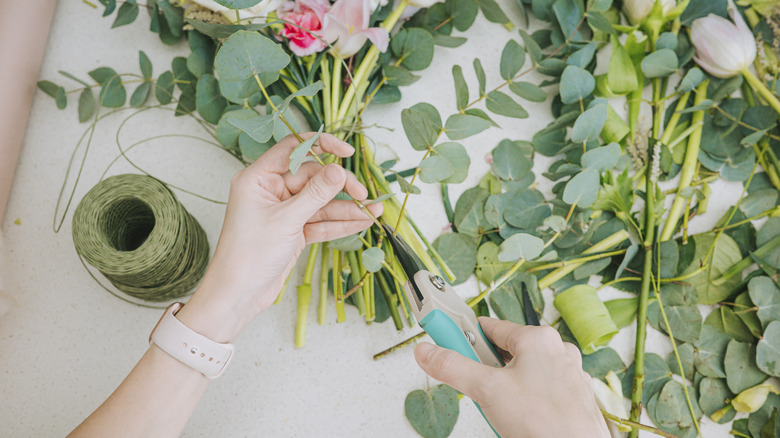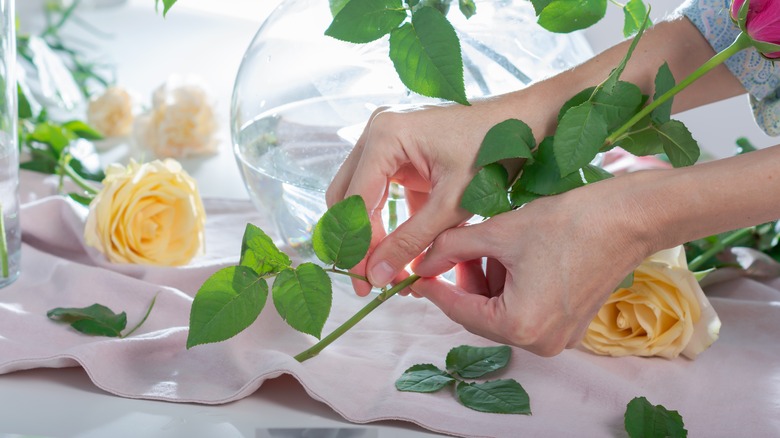You’ve tried every trick in a florist’s training manual to keep cut flowers from the grocery store looking pretty for longer, like vodka in the water, trimming the ends at an angle, and placing your flowers in a cool spot in your home away from direct sunlight. But if you don’t remember to cut the lower leaves off the stems of all your bountiful blooms, these efforts may be in vain. Leaving the leaves on can discolor the water or, worse, turn it toxic, reducing the shelf life of your arrangement.
Leaves start to decompose within just a few hours of being submerged in water. A 2024 study published in The ISME Journal suggests that bacteria — both helpful and, unfortunately for your bouquet-crafting efforts, harmful — rapidly proliferate on leaf litter in streams. It’s not a stretch to suggest leaves submerged in a vase of water undergo a similar transformation. The rot from the leaves can move into the stem, damaging the plant’s vascular system. If the branch can no longer get water to the flower, the flower will wilt and die.
Other reasons to remove leaves

There are aesthetic reasons to remove leaves, too. Foliage-filled stems make for a bulky bouquet, drawing the eye down and away from the stars of the show — the flowers. And being the thin, feeble things they are, leaves tend to die much faster than their sturdier counterparts (again, the flowers). If you keep leaves on stems, your bouquet will appear more wilted than it really is.
You need to remove any leaves that will sit below the water level in your vase. This usually means getting rid of leaves halfway to two-thirds up from the base of the stem. The same goes for any thorns — on, say, those stunning roses you grow in your garden. Check over the remaining leaves carefully and remove any that look unpleasant: yellowing, wilting, insect-chewed, or diseased. Never tear the leaves off; you risk damaging the stem. Like rotted stems, crushed stems block water uptake, reducing the lifespan of your bouquet.
De-leafing best practices

Some plants, like poppies, milkweed, daffodils, and euphorbia, have a milky white substance inside the stems and leaves. Cut the leaves, and the sap drips out, making a mess of your workspace and potentially irritating your skin. To stop the flow, hold a lit match or lighter to the nicked area or submerge the stem in boiling water for a few seconds.
Careful harvesting can help you avoid having to trim leaves off a stem altogether, particularly with bulb flowers like tulips. Using your fingers, follow the branch down from the flower until you reach the base of the plant, then cut or snap it off. This method keeps the leaves on the plant where they’re far more helpful.
Does all this advice mean you shouldn’t have any foliage at all in your arrangements? No! Just treat stems of foliage the same way you’d treat flower stems: remove any leaves that will sit under the water line.



